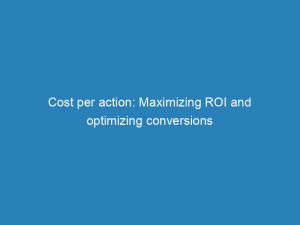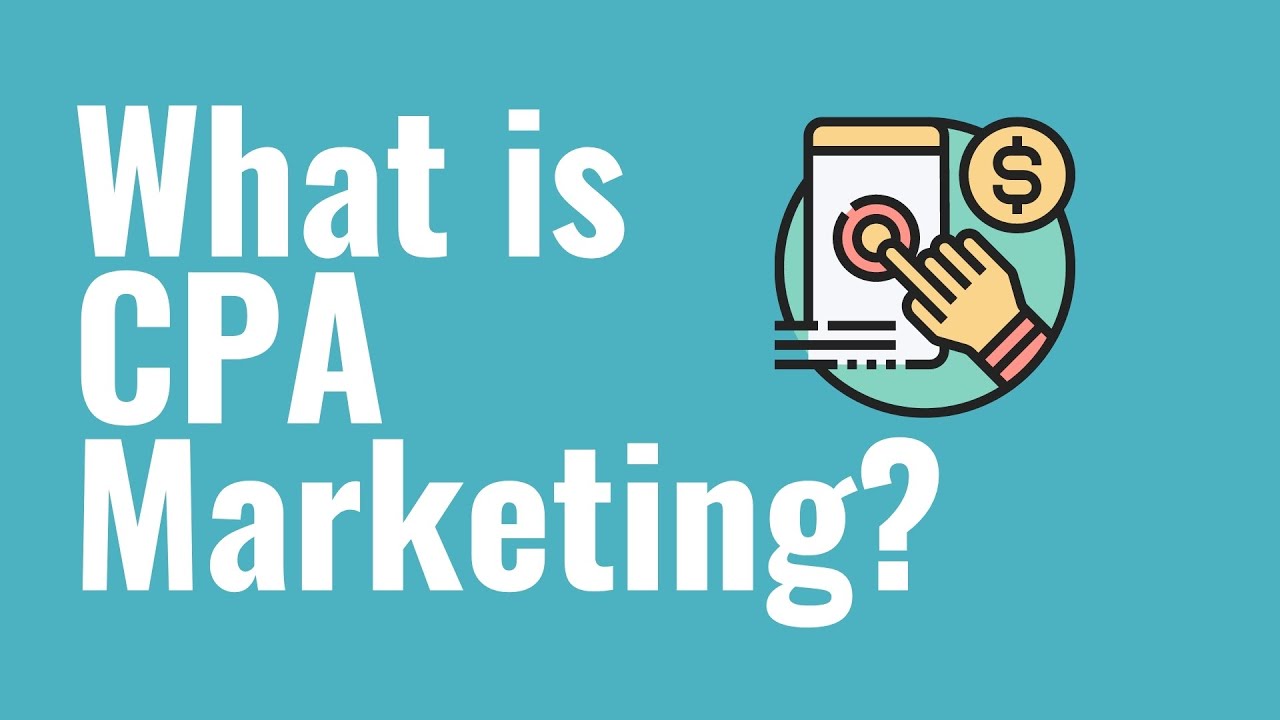In today’s world of digital marketing, where every click, sign-up, and sale counts, advertisers are constantly seeking cost-effective tactics to boost their online presence. One such method gaining popularity is Cost Per Action (CPA) advertising.
With this payment model, advertisers only pay for specified actions, such as sign-ups or sales, ensuring every penny is spent wisely. But how exactly does one track these actions?
Enter tools like Google Analytics, which play a vital role in monitoring campaign performance. However, to truly maximize the power of CPA advertising, joining a network with a plethora of CPA offers is the game-changing next step for those seeking marketing success.
Get ready to unravel the world of CPA, where action speaks louder than words!
| Item | Details |
|---|---|
| Topic | Cost per action: Maximizing ROI and optimizing conversions |
| Category | Ads |
| Key takeaway | In today's world of digital marketing, where every click, sign-up, and sale counts, advertisers are constantly seeking cost-effective tactics to boost their online presence. |
| Last updated | December 27, 2025 |
cost-per-action">cost per action
Cost per action (CPA) is a payment model in which advertisers only pay for a specific action taken by a customer. This can include various actions such as sign-ups, clicks, and sales.
The key benefit of CPA is that it allows advertisers to control costs and track their return on investment. The formula for calculating CPA is the total spend divided by the number of customers acquired.
Tracking is crucial in CPA campaigns and can be done using tools like Google Analytics and voucher codes. CPA is an easy and cost-effective tactic for online retailers.
Updated for 2025’s advertising best practices.
Proper targeting and communication are vital in CPC campaigns, and conversion rate optimization (CRO) and A/B testing can improve landing page performance. Multiple goals help identify issues with landing pages.
To find CPA offers, recommended resources include oDigger and OfferVault.com. Incentivized offers and clean landing pages tend to convert better in CPA marketing.
Before promoting CPA offers, reviewing details and landing page previews is important. The next step in CPA marketing is joining a network that offers CPA offers, and building good relationships with affiliate managers and networks can lead to commission bumps.
In conclusion, CPA is a payment model that allows advertisers to pay for specified customer actions, providing cost control and ROI tracking.Key Points:
- CPA is a payment model where advertisers only pay for specific customer actions
- The formula for calculating CPA is total spend divided by number of customers acquired
- Tracking is crucial in CPA campaigns and can be done using tools like Google Analytics and voucher codes
- Proper targeting and communication are vital in CPA campaigns, and CRO and A/B testing can improve landing page performance
- Finding CPA offers can be done through resources like oDigger and OfferVault.com
- Building good relationships with affiliate managers and networks can lead to commission bumps in CPA marketing.
Sources
https://www.oberlo.com/ecommerce-wiki/cost-per-action
https://backlinko.com/cpa-marketing
https://www.indeed.com/career-advice/career-development/what-is-cost-per-action
https://www.businessofapps.com/ads/cpa/research/cpa-rates/
Check this out:
💡 Pro Tips:
1. Consider the lifetime value of a customer when calculating CPA. While the formula typically looks at the cost per customer acquired, factoring in the potential long-term value of that customer can help make more informed budgeting decisions.
2. Experiment with different types of CPA actions to find what works best for your business. While sign-ups and sales are common actions to measure, testing unconventional actions such as video views or social media engagement may yield surprising results.
3. Use audience targeting strategically in your CPA campaigns. By narrowing down your audience to specific demographics or interests, you can increase the likelihood of acquiring customers who are more likely to take the desired action.
4. Incorporate dynamic content into your landing pages to improve conversion rates. Tailoring the content to each visitor based on their past behavior or interests can significantly boost engagement and encourage them to take the desired action.
5. Invest in effective copywriting and persuasive messaging to compel visitors to take action. Crafting compelling headlines, persuasive calls-to-action, and clear value propositions can make a significant difference in the success of your CPA campaigns.
1. Cost Per Action (Cpa) Defined
Cost per action (CPA) is a payment model in the field of advertising where advertisers are only required to pay for a specified action taken by a customer.
This means that advertisers do not pay for impressions or clicks, but rather for actual actions that are considered valuable to their business. These actions can be varied and can include sign-ups, clicks, sales, or any other action that the advertiser considers to be important and indicative of a successful conversion.
CPA offers advertisers a way to control their costs and track their return on investment (ROI) more effectively. By only paying for specific actions, advertisers can ensure that they are only spending money on actions that are likely to lead to a positive outcome for their business.
This allows advertisers to have more control over their budget and allocate their resources in a way that maximizes their ROI.
2. Different Actions That Can Be Measured With Cpa
CPA can measure various actions that are valuable to advertisers.
These actions can vary based on the goals of the advertising campaign and the specific needs of the advertiser. Some common actions that advertisers may measure with CPA include:
3. Benefits Of Using Cpa For Advertisers
There are several benefits of using CPA for advertisers:
This allows advertisers to tailor their campaigns to their specific needs and objectives.
4. Formula For Calculating Cpa
The formula to calculate CPA is relatively simple.
It is calculated by dividing the total spend by the number of customers acquired as a result of the specific action being measured. The formula can be represented as follows:
CPA = Total Spend / Customers Acquired
By using this formula, advertisers can determine the cost per customer acquisition and assess the effectiveness and efficiency of their advertising campaigns.
5. Importance Of Tracking In Cpa Campaigns
Tracking is vital in CPA campaigns as it allows advertisers to measure the success of their campaigns and make informed decisions about their marketing strategy.
There are various tools and techniques available for tracking CPA campaigns, such as Google Analytics and voucher codes.
Google Analytics is a popular and powerful tool for tracking website traffic and conversions. It provides detailed insights into user behavior and allows advertisers to measure the success of their CPA campaigns.
Voucher codes, on the other hand, can be used to track specific actions and attribute them to a particular campaign or advertisement.
Continued.
Self-Serve DSP Platform • Native Ad Network • Programmatic Advertising • Buy Traffic











